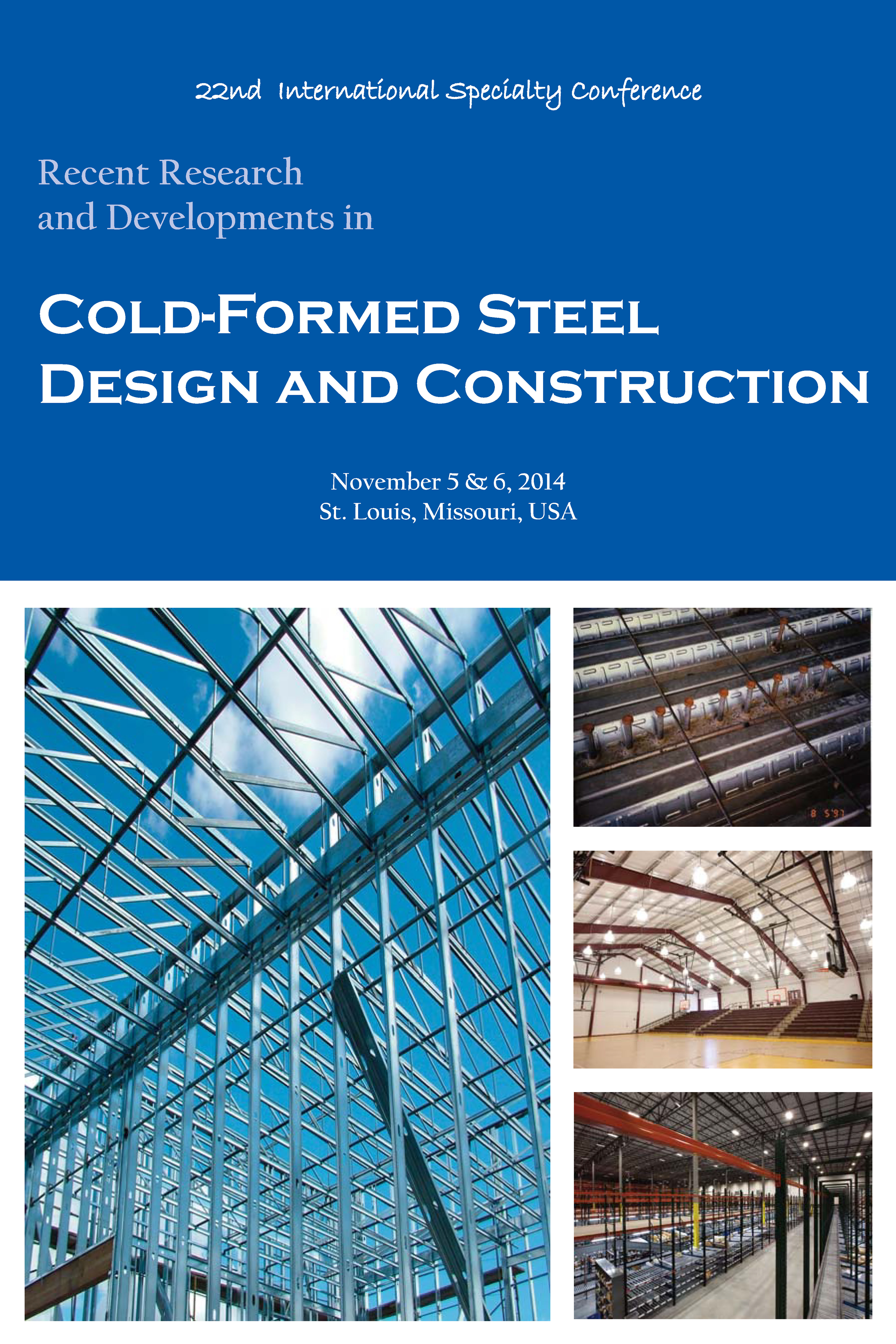Session Dates
06 Nov 2014
Abstract
In the summer of 2013, testing of two full-scale cold-formed steel (CFS) framed buildings under seismic excitations took place at the Structural Engineering and Earthquake Simulation Lab (SEESL) at the University at Buffalo. Utilizing the twin shake tables, the two-story building specimens were subjected to ground motions from the 1994 Northridge earthquake. These experiments were conducted as a part of the CFS-NEES experimental effort in an attempt to advance cold-formed steel earthquake engineering and design. Two buildings were tested: the first, a specimen constructed with only structural components (CFS-framed gravity walls, shear walls, floor and roof diaphragms, with OSB sheathing on shear walls and diaphragms); the second began with an exact replica of the first building, but saw the addition of various non-structural systems such as gravity wall sheathing, full diaphragm sheathing, interior partition walls, and exterior weatherproofing. Prior to these experiments, little experimental data existed on full building system behavior for CFS framing. This paper presents results on full-system behavior, specifically examining: drifts, acceleration amplification, shear wall behavior, base shear, diaphragm flexibility, damping, and period of vibration. Comparison to the North American specification for CFS, and design recommendations are also provided.
Department(s)
Civil, Architectural and Environmental Engineering
Research Center/Lab(s)
Wei-Wen Yu Center for Cold-Formed Steel Structures
Sponsor(s)
National Science Foundation (U.S.)
American Iron and Steel Institute
ClarkDietrich
Steel Stud Manufacturers Association
Steel Framing Industry Alliance
Devco Engineering
Mader Construction
DSi Engineering
Simpson Strong-Tie
Meeting Name
22nd International Specialty Conference on Cold-Formed Steel Structures
Publisher
Missouri University of Science and Technology
Document Version
Final Version
Rights
© 2014 Missouri University of Science and Technology, All rights reserved.
Document Type
Article - Conference proceedings
File Type
text
Language
English
Recommended Citation
Peterman, Kara D.; Madsen, Rob L.; and Schafer, Benjamin W., "Experimental Seismic Behavior of the CFS-NEES Building: System-Level Performance of a Full-Scale Two-Story Light Steel Framed Building" (2014). CCFSS Proceedings of International Specialty Conference on Cold-Formed Steel Structures (1971 - 2018). 3.
https://scholarsmine.mst.edu/isccss/22iccfss/session12/3
Experimental Seismic Behavior of the CFS-NEES Building: System-Level Performance of a Full-Scale Two-Story Light Steel Framed Building
In the summer of 2013, testing of two full-scale cold-formed steel (CFS) framed buildings under seismic excitations took place at the Structural Engineering and Earthquake Simulation Lab (SEESL) at the University at Buffalo. Utilizing the twin shake tables, the two-story building specimens were subjected to ground motions from the 1994 Northridge earthquake. These experiments were conducted as a part of the CFS-NEES experimental effort in an attempt to advance cold-formed steel earthquake engineering and design. Two buildings were tested: the first, a specimen constructed with only structural components (CFS-framed gravity walls, shear walls, floor and roof diaphragms, with OSB sheathing on shear walls and diaphragms); the second began with an exact replica of the first building, but saw the addition of various non-structural systems such as gravity wall sheathing, full diaphragm sheathing, interior partition walls, and exterior weatherproofing. Prior to these experiments, little experimental data existed on full building system behavior for CFS framing. This paper presents results on full-system behavior, specifically examining: drifts, acceleration amplification, shear wall behavior, base shear, diaphragm flexibility, damping, and period of vibration. Comparison to the North American specification for CFS, and design recommendations are also provided.




Comments
The authors would like to thank the National Science Foundation (NSF-CMMI #1041578)